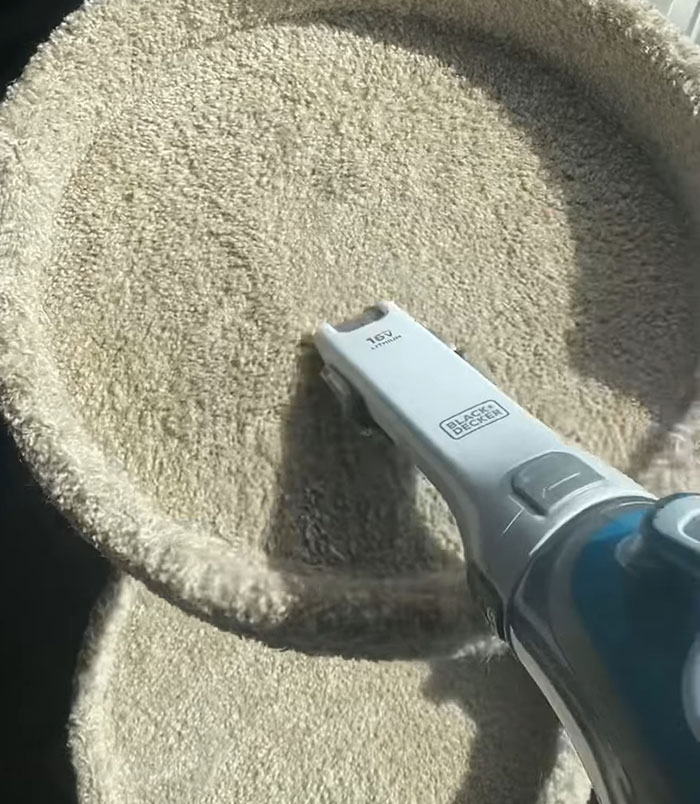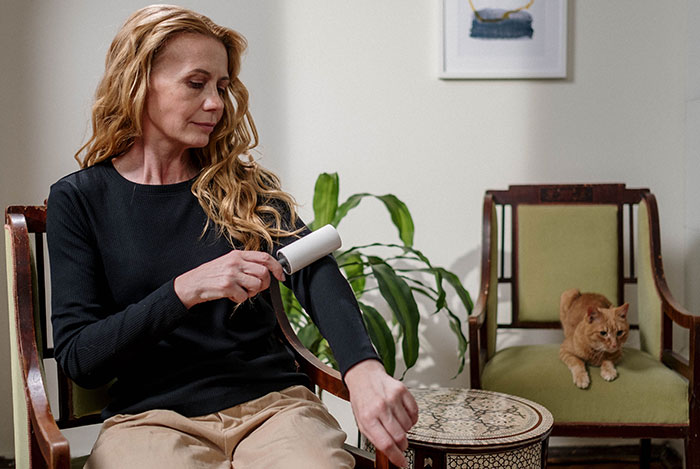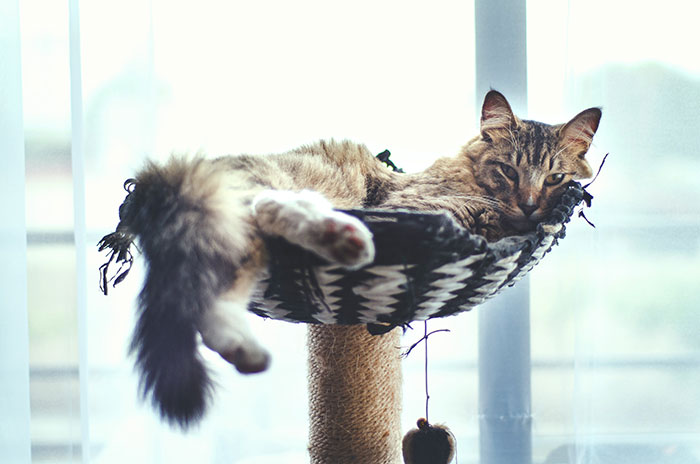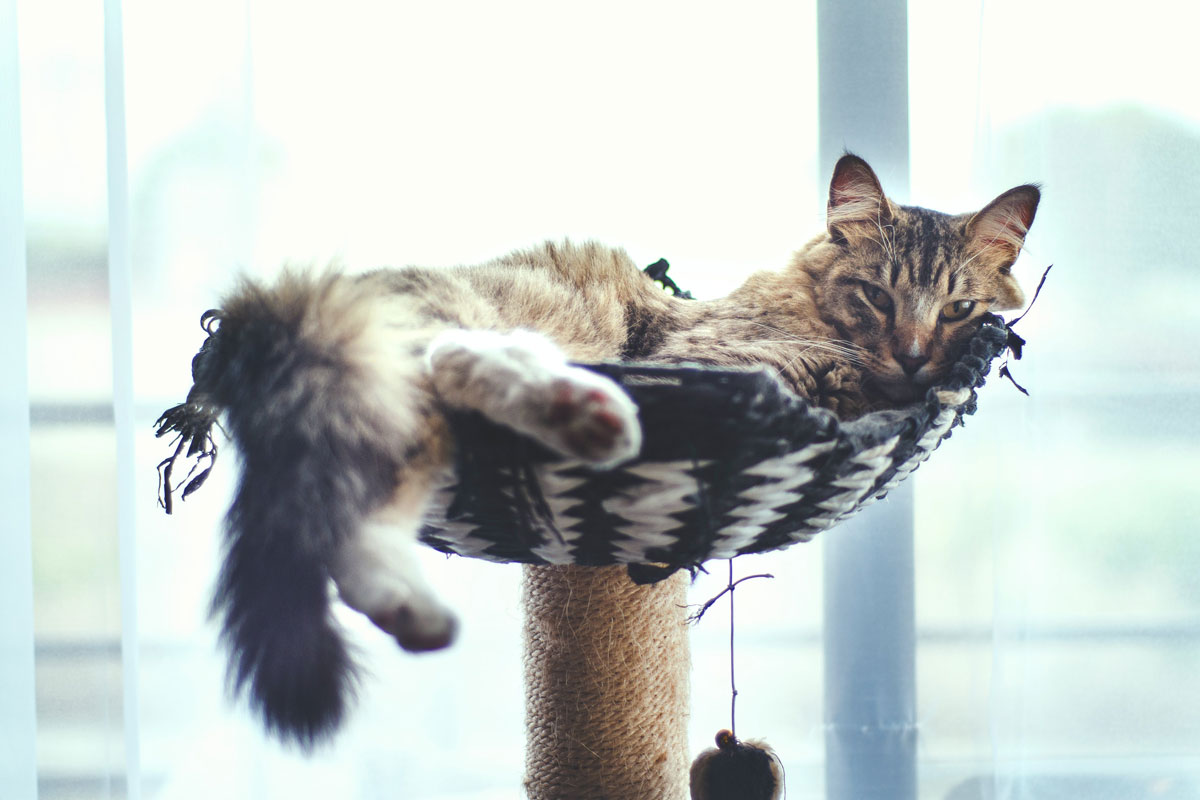Owning cats comes with many different responsibilities. Did you know that keeping their cat tree clean is one of them? Cats love to scratch and hide, making their beloved trees their pride and joy.
After some time, they become old, damaged, and sometimes stinky from all the use. Follow along with this comprehensive guide to understand how to take an old cat tree through a cleaning and mending process that leaves them looking rejuvenated in the end. If it is impossible to clean it, look at some great offers for new cat trees.
- Cleaning a cat tree helps prevent bacteria and minimize allergens.
- Vacuum and use pet-safe cleaner to remove dirt and hairs.
- Steam cleaning can disinfect and refresh the cat tree thoroughly.
- Use baking soda and hydrogen peroxide to eliminate odors.
- Re-rope cat tree with sisal to maintain a safe scratching space.
The information provided herein is for informational purposes only. Please refer to our disclaimer for more details..
Why is it important to clean a cat tree?
Cleaning a cat tree is essential for several reasons:
Firstly, it helps prevent the spread of bacteria and parasites that may have accumulated on the surfaces where your cat spends a lot of time. By regularly cleaning the cat tree, you can create a healthier environment for both your feline friend and your family.
Additionally, regular cleaning can help reduce allergens in the home, making it more comfortable for everyone living in the house.
Lastly, keeping your cat tree clean is crucial to maintaining your cat’s health and ensuring they are happy and content in their safe place. Remove any toys, bedding, or other removable components to clean a cat tree.

Image credit: Youngest Old Cat Lady
Vacuum the entire cat tree to remove loose hairs, dirt, and debris. Use a pet-safe cleaner and a soft cloth to wipe down all surfaces of the cat tree, paying special attention to areas where your cat likes to lounge or scratch. Make sure to thoroughly dry the cat tree before reassembling it to prevent mold and mildew growth.
What tools are needed to clean a cat tree and remove hair?
When it comes to cleaning a cat tree, there are a few essential tools that can make the task much easier. A vacuum cleaner is a vital tool for removing dirt, debris, and cat hair from the small corners of the cat tree.
Additionally, a lint roller can effectively remove stubborn cat hair from the fabric and hard surfaces on the cat tree. A soft-bristled brush or toothbrush can be used to remove dirt and grime from the fabric and carpeted areas of the cat tree.

Image credit: cottonbro studio
Lastly, a pet-safe cleaning solution or a mixture of water and vinegar can be used to scrub and disinfect the cat tree, leaving it clean and fresh for your feline friend. Remember to check the manufacturer’s instructions for specific cleaning recommendations for your cat tree.
Regular cleaning and maintenance of your cat tree will help keep it looking and smelling great and provide a clean and safe space for your cat to play and relax.
What are the steps to steam clean a cat tree?
Steam cleaning a cat tree can provide thorough cleaning and disinfection. To start, prepare the steam cleaner according to the manufacturer’s instructions, ensuring that it is suitable for use on the cat tree.
Then, carefully steam cleans the fabric and hard surfaces of the cat tree, paying attention to areas where your cat might spend a lot of time. After steam cleaning, allow the cat tree to air dry completely before allowing your cat to use it again. Here are the steps to steam clean a cat tree:
1.) Prepare the steam cleaner according to the manufacturer’s instructions.
2.) If the cat tree has removable parts, such as fabric-covered platforms or cushions, remove them and steam clean them separately.
3.) Use the steam cleaner to thoroughly clean and disinfect all fabric and hard surfaces of the cat tree.
4.) Pay special attention to areas where your cat likes to scratch or sleep, as these areas may accumulate more dirt and bacteria.
5.) Allow the cat tree to air dry completely before reassembling it or allowing your cat to use it again.
6.) Consider using a pet-safe disinfectant or deodorizer after steam cleaning to further sanitize and freshen the cat tree.
7.) Regularly steam clean the cat tree to maintain its cleanliness and prevent the buildup of dirt, bacteria, and odors.
How to disinfect and remove odors from a cat tree?
To effectively disinfect and remove odors from a cat tree, it is important to use pet-safe cleaners to ensure the safety of your feline friend. Additionally, sprinkling baking soda on the fabric and allowing it to sit for a few minutes can help absorb odors.
For thorough disinfection, a hydrogen peroxide solution can be used, ensuring that the cat tree is clean and disinfected before putting it back together for your cat to enjoy.
Regularly vacuuming and brushing the cat tree is also important to remove any accumulated hair and debris. This will help prevent odors from building up and keep the cat tree clean for your pet.
Additionally, washing any removable fabric parts in the washing machine with a pet-safe detergent can help keep the cat tree fresh and odor-free.
In between deep cleanings, spraying the cat tree with a pet-safe odor-neutralizing spray can help keep it smelling fresh. It is important to choose a safe spray for pets, as cats can be sensitive to certain chemicals and fragrances.
Regular maintenance and pet-safe cleaning products are essential for keeping your cat tree clean, disinfected, and odor-free. This will help create a healthy and comfortable environment for your cat to play and relax in.
How to re-rope a cat tree
Scratching is an important and healthy activity for cats to engage in. To protect your furniture from being scratched, keep your cat occupied with trees and toys.

Image credit: Té De Gatos
However, even the most durable sisal rope can become worn out after heavy use. Here’s the best way to replace it and give your cat’s tree a new lease of life.
Calculating the length of rope needed can be tricky, especially if the original rope is already in bad shape. To make things easier, use a sewing measuring tape to measure the circumference of the post where you’ll be replacing the sisal rope.
If you don’t have a sewing measuring tape, use a piece of string to measure the length needed and then measure the string with a yardstick or a handyman’s tape measure. Finally, you can unwind some of your new sisal and wrap it around the old rope to mimic the length.
Once you have the circumference and height of the pole, it’s time to give it a snip with scissors. When cutting the rope, wrap the end back on itself about an inch and secure it with a rubber band to prevent it from unraveling while you work.
To remove the old rope, take the cat tree outside, as old sisal rope can be dusty and release collected bacteria, dust, and dander. Placing the tree on a flat surface is best for cleaning purposes. Wear old clothes you don’t mind getting dusty, and grab a mask and eyewear to ensure nothing gets in your nose or mouth.
Begin by cutting the most heavily damaged part of the rope with a sharp blade. If you cut them off in chunks, the rope can be easily removed at once or in a couple of pieces. Working from top to bottom can minimize the mess. If the rope was glued to the post, you might have to pull hard, which is when you’ll encounter the most dust and bits of flying sisal.
Use a staple remover or pliers to remove the securing staple at the top and bottom of the sisal rope where the ends are fastened to the pole. You could even use a flat-nose screwdriver to pop the staples up easily. Staples can harm humans and animals, so make sure to dispose of them as a part of your cleanup process.
When attaching the new rope, it’s easiest to use the same shape and size as before. However, your cat isn’t going to mind if you want to mix and match. Using oil-free sisal rope is the best practice to protect your cat from any additional toxins.
Start the winding process by securing the bottom end of the rope as close to the base as possible. Wrap the rope as tightly as possible around the pole and use a rubber mallet to tap each level of cordage tightly against each other to ensure it’s secure. If your coils are tight and secure, your new and improved cat tree will give your cat’s sharp claws a run for their money.
It is recommended not to use glue unless needed because the unpleasant scent deters cats. The last thing you want is to put a ton of effort into revamping your cat’s tree just for them to avoid it.
By incorporating regular cleaning into your cat tree maintenance routine, you can ensure a healthier and happier environment for your cat and your family. Plus, a clean and well-maintained cat tree will last longer and remain a favorite spot for your feline friend to enjoy.
333views
Share on Facebook



-2
0